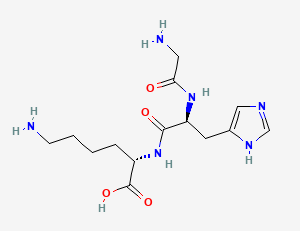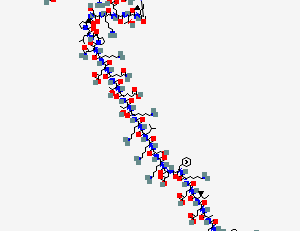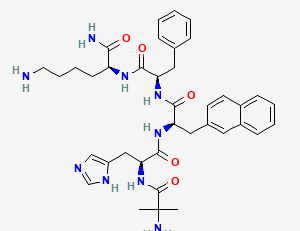What Is BPC-157?
Introduction
BPC-157, short for Body Protection Compound-157, is a synthetic peptide derived from a naturally occurring protein sequence found in gastric juice. It has become a prominent subject of preclinical research for its potential roles in cellular regeneration, angiogenesis, and tissue stability. While it is sometimes discussed in popular health media, BPC-157 remains a research-use-only compound that has not been approved by the U.S. Food and Drug Administration (FDA) for human use, diagnosis, or therapy.¹⁻³

This article explores the scientific background and laboratory research behind BPC-157 — its molecular characteristics, mechanisms observed in animal and in-vitro models, and areas of ongoing investigation — all within the framework of responsible, educational discussion.
Molecular Structure and Characteristics
BPC-157 is classified as a pentadecapeptide, meaning it contains fifteen amino acids. It is a synthetic analog of a partial sequence of the Body Protection Compound (BPC), a naturally occurring protein isolated from human gastric juice.

- Molecular Formula: C₆₂H₉₈N₁₆O₂₂
- Molecular Weight: 1419.535 g/mol
- Sequence: Gly-Glu-Pro-Pro-Pro-Gly-Lys-Pro-Ala-Asp-Asp-Ala-Gly-Leu-Val
This structure gives BPC-157 a remarkable stability in laboratory conditions — it resists enzymatic degradation better than many other short peptides, which makes it useful for controlled in-vitro and in-vivo studies.¹
Biological Context
Naturally occurring BPC is secreted in small quantities by the gastric mucosa. In laboratory research, synthetic BPC-157 has been studied for its role in modulating angiogenesis, fibroblast activity, and nitric oxide signaling.²
These pathways are of particular interest in regenerative biology because they underlie how tissues recover from chemical, mechanical, or oxidative stress in controlled research models. The peptide’s stability and biological compatibility make it a frequent subject of studies examining growth-factor interactions and vascular remodeling.¹⁻³
Mechanisms Observed in Preclinical Models
1. Angiogenesis and Vascular Signaling
Angiogenesis — the process of forming new blood vessels — is one of the most widely studied actions of BPC-157. In rodent models, the peptide has been shown to influence the vascular endothelial growth factor (VEGF) pathway, potentially enhancing endothelial cell migration and vessel stabilization.²³
These observations suggest that BPC-157 may help researchers understand how certain signaling molecules coordinate tissue regeneration following ischemic or mechanical damage in animal models.
2. Fibroblast Activity and Collagen Organization
Fibroblasts play a central role in tissue integrity and scar formation. In preclinical experiments, BPC-157 exposure has been associated with enhanced fibroblast migration and improved collagen fiber alignment during tendon or ligament recovery studies.¹²
This property is of particular interest to research teams studying extracellular matrix dynamics — the structural “scaffolding” of cells during wound closure and remodeling.
3. Nitric Oxide Modulation
Nitric oxide (NO) is an essential molecule in vascular and immune regulation. BPC-157 appears to influence the nitric-oxide synthase (NOS) system, balancing both overproduction and deficiency of NO in experimental settings.³
This balancing effect is a key focus of pharmacological interest because dysregulated NO signaling is implicated in many inflammatory and oxidative processes.
4. Cellular Signaling and Growth Factors
BPC-157 has been observed to interact with several growth-factor pathways — including FAK (focal adhesion kinase) and MAPK/ERK cascades — which govern cellular migration and differentiation in tissue models.¹⁻³
Researchers use these models to map how BPC-157’s molecular signals fit within the broader network of biochemical communication responsible for cell survival and tissue patterning.
Research Applications
Although still confined to preclinical settings, BPC-157 has been examined in a wide array of animal and cell-based studies:
| Research Model | Area of Focus | Key Observation |
| Rodent tendon/ligament models | Angiogenesis, fibroblast migration | Improved organization of collagen fibers |
| Gastrointestinal models | Mucosal integrity | Reduced oxidative and inflammatory markers |
| Neural tissue models | Peripheral nerve injury | Enhanced Schwann cell activity and revascularization |
| Muscle models | Recovery following overload | Preservation of microvascular function |
| Hepatic and cardiac models | Ischemic stress | Modulation of vascular repair signaling |
These studies are exploratory and serve primarily to identify potential mechanisms for further research, not to establish clinical efficacy.
Questions Often Asked in Research Circles
Is BPC-157 naturally occurring?
Yes — the peptide sequence originates from a portion of a protein found in human gastric juice. The form used in laboratory studies is a synthetic analog, purified and stabilized for controlled experimentation.¹
Has BPC-157 been tested in humans?
BPC-157 has been referenced in limited experimental reports outside the U.S., but there are no FDA-approved human clinical trials or licensed medical uses. All reliable data come from animal and in-vitro studies.²³
How is BPC-157 typically studied?
Preclinical studies use controlled dosing protocols scaled to animal weight and route of administration (e.g., oral or parenteral) depending on the hypothesis under investigation. These methods are not standardized for human translation.
Why is BPC-157 of scientific interest?
Researchers value BPC-157 as a model compound for studying interactions between growth factors, endothelial repair, and cytoskeletal organization. Its stability and diverse mechanistic profile make it a useful peptide for hypothesis-driven investigation in tissue biology.¹⁻³
Safety and Regulatory Context
Because BPC-157 has not completed formal toxicology or pharmacokinetic testing in humans, it remains a laboratory-only research compound. It cannot be marketed or sold for consumption, therapeutic use, or performance enhancement.
Any discussion of biological activity must remain in a research context. The FDA defines a “drug” as any substance intended to diagnose, cure, mitigate, treat, or prevent disease — therefore, even implying human benefit would constitute an unapproved drug claim.
Responsible laboratories use BPC-157 solely for cell culture, molecular pathway, or animal-model research in compliance with institutional and federal regulations.
Current Areas of Research
Active preclinical work continues in several categories:
- Tendon and Ligament Remodeling: studying collagen fiber regeneration and angiogenesis after mechanical stress.²
- Vascular Biology: analyzing endothelial cell migration and nitric-oxide signaling.³
- Gastrointestinal Protection: exploring mucosal integrity in oxidative and inflammatory models.¹
- Neurological Research: assessing microvascular and neuronal regeneration following injury.³
- Multi-peptide Interactions: evaluating BPC-157 in combination with growth hormone secretagogues or other regenerative peptides (e.g., TB-4).
These projects expand the mechanistic understanding of how small peptides influence complex repair pathways in controlled systems.
Future Directions
Future research may focus on:
- Mapping BPC-157 receptor binding sites and downstream signaling networks.
- Defining pharmacokinetics and stability in different tissue environments.
- Investigating synergistic pathways when combined with other growth-modulating molecules.
- Conducting toxicology and safety assessments necessary for potential translation into regulated human trials.
Each of these steps must follow rigorous ethical standards and regulatory oversight before any clinical application can be considered.
Summary
BPC-157 is a 15-amino-acid synthetic peptide derived from a natural gastric protein. It has been widely studied in animal and in-vitro models for its influence on angiogenesis, fibroblast migration, nitric-oxide signaling, and cellular growth pathways.
While preclinical findings are promising for understanding mechanisms of tissue organization and recovery, no human therapeutic uses are authorized or established. All current evidence supports BPC-157’s role as a tool for research rather than a medical product.
References
- Sikiric P, Seiwerth S, Rucman R, et al. Gastrointestinal tract and BPC-157: healing and protective peptide. Curr Pharm Des. 2018;24(18):1980-2000. doi:10.2174/1381612824666180705144416
- Jereb M, Vukojevic J, Sikiric P, et al. BPC-157 and angiogenesis in preclinical models. Peptides. 2021;136:170458. doi:10.1016/j.peptides.2020.170458
- Sikiric P, Seiwerth S, Vukojevic J, et al. BPC-157 as a potential cytoprotective peptide: animal model evidence. Int J Mol Sci. 2020;21(24):9095. doi:10.3390/ijms21249095




